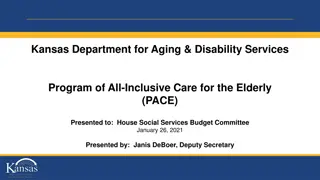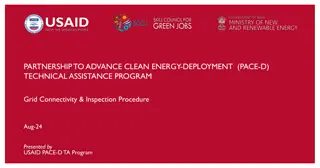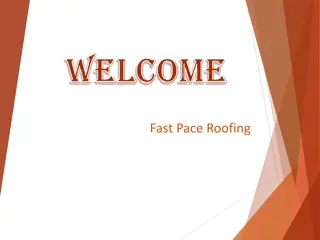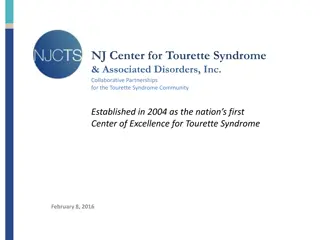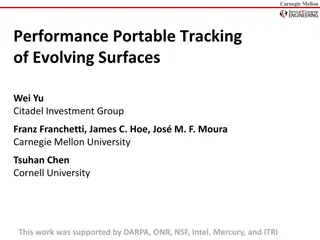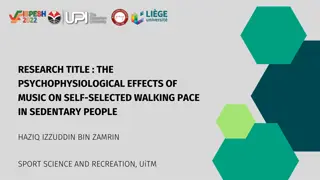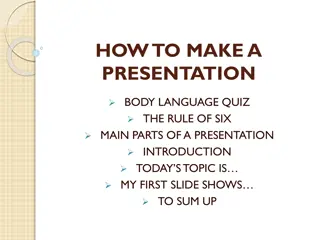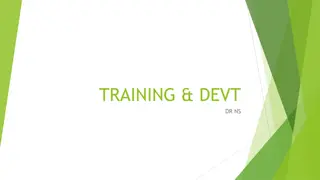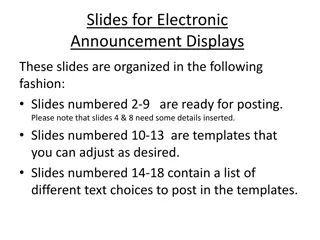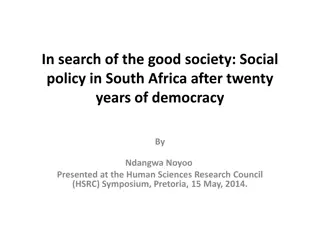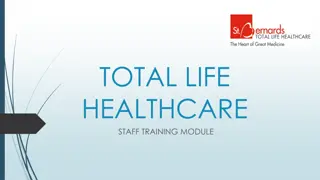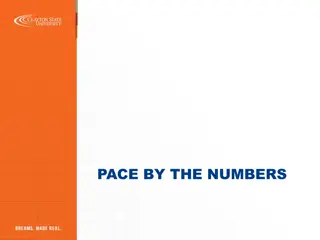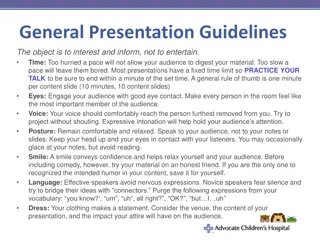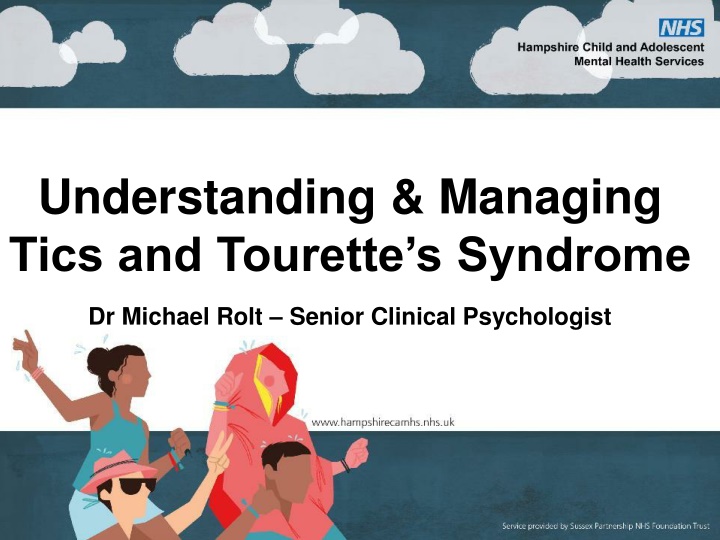
Managing Tics and Tourette's Syndrome - Insights and Strategies
Explore the definition of tics and Tourette's Syndrome, along with diagnostic criteria and associated stereotypies. Learn about causes, diagnosis, and management strategies for individuals affected by these conditions. Discover treatment pathways and resources to help effectively manage tics.
Download Presentation

Please find below an Image/Link to download the presentation.
The content on the website is provided AS IS for your information and personal use only. It may not be sold, licensed, or shared on other websites without obtaining consent from the author. If you encounter any issues during the download, it is possible that the publisher has removed the file from their server.
You are allowed to download the files provided on this website for personal or commercial use, subject to the condition that they are used lawfully. All files are the property of their respective owners.
The content on the website is provided AS IS for your information and personal use only. It may not be sold, licensed, or shared on other websites without obtaining consent from the author.
E N D
Presentation Transcript
Understanding & Managing Tics and Tourette s Syndrome Dr Michael Rolt Senior Clinical Psychologist
1. What are Tics / is Tourettes Syndrome (TS)? 2. Treatment Pathway 3. Strategies that help manage Tics (inc. resources)
Definition: A tic is a sudden, repetitive, non-rhythmic motor movement or vocalisation involving discrete muscle groups (1) (1) American Psychiatric Association: Diagnostic and Statistical Manual of Mental Disorders, 5th edition. Arlington, VA., American Psychiatric Association, 2013.
Motor Vocal Eye blinking Head jerks Hand movements Leg movements Sounds Sniffing Simple Animal / bird noises Coughing Shoulder movements Facial expressions Bending Copropraxia Head gestures Syllables Words Coprolalia Echolalia Palilalia Complex
To be diagnosed with TS, a person must (1); have two or more motor tics and at least one vocal tic have had tics for at least a year have tics that begin before the age of 18 years have symptoms that are not due to taking medicine or other drugs or due to having another medical condition (1) American Psychiatric Association: Diagnostic and Statistical Manual of Mental Disorders, 5th edition. Arlington, VA., American Psychiatric Association, 2013.
STEREOTYPIES ARE ALSO SEEN IN Autism Spectrum Disorder Intellectual Disability Severe visual impairment Sensory deprivation Genetic Syndromes such as Lesch-Nyhan, Retts Intrauterine Alcohol exposure Stroke/ brain injury Cerebellar pathology
Causes of Tics and TS disorder; The exact cause of Tourette's is unknown, but it is thought that both genetic and environmental factors are involved. The exact mode of inheritance is not yet known, and no gene has been identified.
Tics typically begin in young people between 5 and 8 years of age, affecting 12-18% of the school-age population Tic severity peaks during puberty but decreases throughout the second decade of life Tics become gradually more suppressible with age
MORE THAN JUST A MOVEMENT DISORDER We use the term Tourette Syndrome Tic disorders are better understood as a complex neuro-behavioural condition A high rate of mental health /developmental co- morbidities
MORE THAN JUST A MOVEMENT DISORDER Among children diagnosed with TS, 86% also have been diagnosed with at least one additional mental, behavioural, or developmental condition, such as: ADHD 30 - 60% Obsessive Compulsive Disorder 30 - 40% Anxiety disorders 25% - 30% Conduct & ODD 10-30% ASC 5 % Specific learning difficulties (23%)
FUNCTIONAL TICS Rapid onset Dramatic presentation Prolonged loss of function of limbs Predominantly female Associated with depression and anxiety Potential influence of social media
Tics and Tourettes Pathway Mild PsychoEd / Support Organisations MHST Moderate/Severe Psychoeducation (YP & Parent) Neuro- screen (GP) Tier 4 CBIT / Comorbidity Medication Neurological Paediatrics
Comprehensive Behavioural Intervention for Tics (CBIT) Assessment Developmental History Formulation Triggers and consequences Intervention Psycho Education Habit Reversal Therapy
Formulation External cues can include specific activities (e.g., playing sports, musical instruments) and environmental/situational situations (e.g., returning home, specific family members) Internal cues commonly including premonitory urges and/or internal mood states (e.g., anxiety, boredom etc.)
Triggering Events That Impact Tics Being upset or anxious (Silva et al., 1995) Watching TV (Silva et al., 1995) Being Alone (Silva et al., 1995) Social Gatherings (Silva et al., 1995) Stressful Life Events (Surwillo et al., 1978) Hearing Others Cough (Commander et al., 1991) Talking about tics (Woods et al., 2001)
Anatomy of a Tic Premonitory Urge Tic Relief
Clinical Characteristics of Tics Strong urge before a tic, similar to the feeling you get before needing to itch or sneeze. Premonitory Urge Premonitory sensations are only relieved after the tic has been carried out.
Clinical Characteristics of Tics Some people can control their tics for a short while in certain social situations Tics Controlling tics can be tiring. A person may have a sudden release of tics after a day of trying to control them
Example of a Tic Formulation Trigger (e.g. classroom) Negative social reaction Increase Anxiety Increased Premonitory Urges Perform Tic
Competing Response training Allows the young person to select and implement behaviour designed to prevent the occurrence of Tics
Competing Response training Tic Premonitory Urge Competing Response
Competing Response training A good competing response; Is the opposite of the tic (so it blocks the tic), Is less of a problem than the tic (for example, less noticeable or less painful), Can be done for at least one minute, or until the urge to tic passes (whichever is longer)
Treatment Challenges No N.I.C.E. guidelines for treating Tourette Syndrome Physical Health or Mental Health?
Parents strategies for support Open Communication Collaborate with Professionals Develop Coping Mechanisms Promote Healthy Lifestyle Habits Promote Self-Advocacy Celebrate Achievements Encourage Relaxation Techniques
Parents supportive environment Education and Awareness Positive Reinforcement Empower Your Child Avoid Drawing Attention Establish Routines
Parents resources Tourettes Action (tourettes-action.org.uk) Tourette syndrome information pack | Great Ormond Street Hospital (gosh.nhs.uk) Leaky Brake Toolbox (The Brake Shop Virtual Clinic) (leakybrakes.ca/) Nix Your Tics!: Eliminate Unwanted Tic Symptoms: A How-To Guide for Young People B. Duncan McKinlay
Schools - Tics and their Impact on Students Definition Prevalence Impact on Education Disruption Social Interactions Academic Performance Emotional Well-being / Self-Esteem
Schools Strategies supporting Students Educate Staff Individualised Support Classroom adjustments
Schools Building an Inclusive School Culture Promote awareness Peer Education Support Networks


